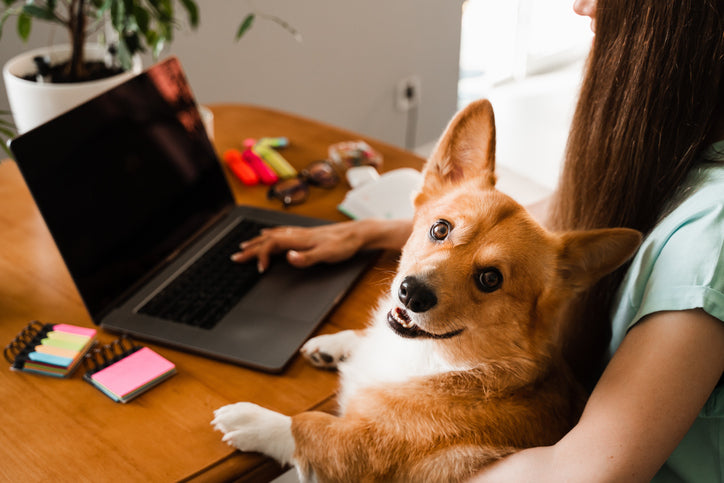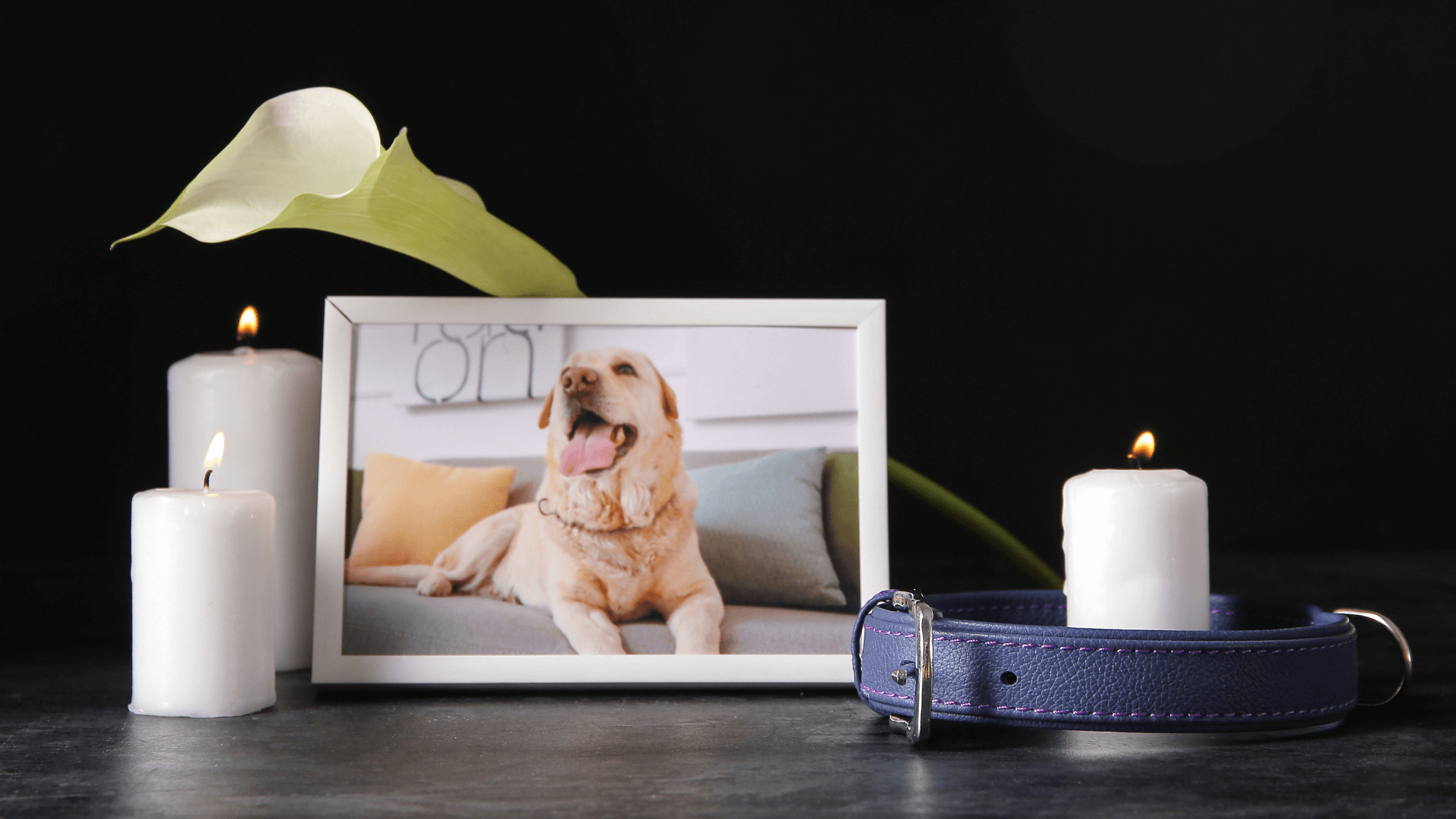
Should You Get a Puppy if You Work Full-Time? Challenges, Solutions, and a Schedule for Working Puppy Parents

Getting a new puppy is so much fun. Raising that puppy, on the other hand, is full of challenges, even under the best of circumstances. Raising a puppy when you work full-time cranks those challenges up to eleven.
But take heart. With planning, structure and plenty of support -- either volunteer or hired -- taking care of a puppy while working full time is totally doable. We’ve put together a guide to help you navigate these special challenges, and also to help you decide for certain whether getting a puppy is a realistic goal for this season of your life.
Is it Responsible to Get a Puppy While Working 8 to 10 Hours a Day?
A lot of well-meaning people in the dog community are highly critical of anyone who would even contemplate getting a puppy when they can’t be home with them throughout the day, which is something you should be prepared for. Also, some breeders and rescue organizations may refuse to let their puppies go to a home where someone won’t be home most of the day.
But the truth is that throughout the ages people have managed to raise puppies while holding down full-time jobs, and those puppies have grown into healthy, well-adjusted dogs who lived happy lives with their working families. Just as working parents of babies and small children need to make adjustments and seek outside help to raise their kids while working, working puppy parents will need to do the same.
As long as you’re mindful of the challenges and have a plan and structure in place to make sure all of your puppy’s needs are met, you should feel free to ignore the haters and go after your puppy dream. It won’t be easy, but then again, raising a puppy rarely is. Nevertheless, it’s sure to be one of the most rewarding experiences of your life.
The Challenges of Raising a Puppy While Working Full-Time
Puppies have four basic needs that need to be met throughout the day:
- Toilet training
- Feeding
- Training
- Socialization
During the first week or so, toilet training your puppy will be a full-time job in and of itself. Puppies are usually eight weeks old when they’re ready to leave their mother and go to a new home. At this age, they need to potty at least every two hours or so, and they need consistent repetition and reinforcement to teach them where they’re supposed to go and help them avoid accidents. The time they can go between potty breaks will lengthen as they get older. A good rule of thumb is one hour for each month of their age. By the time they’re six months old, they’ll be able to hold it about as long as an adult dog.
Puppies also eat more frequently than adult dogs. Generally, puppies should be fed at least three times a day, which means someone needs to be able to feed them in the middle of the day.
Your puppy will also need basic obedience training. At a minimum, they should learn the commands to sit, lie down, and come when called, as well as to “leave it” or “drop it.” Fortunately, most puppies only need about five to ten minutes of training a few times a day, which should make it fairly easy to squeeze it into your schedule while you’re at home.
But training also includes setting and enforcing boundaries and how to have good manners. You may also want to crate train your puppy, which will help with potty training and also keep them safely corralled when nobody’s there to watch them.
Your puppy’s first few months are a critical time for socialization. During this time, they need to be exposed to as many new people, animals, sights, sounds, smells and textures as possible, in order to desensitize them to the world around them and prevent them from becoming anxious and fearful. Puppies who aren’t properly socialized are virtually guaranteed to develop behavioral problems as they get older.
In addition to these daily needs, your puppy will also need to visit the vet at two months, three months and again at four months of age for their shots and a wellness check. Depending on their breed, you may also want to have them spayed or neutered when they’re six months old. While you may be able to find a vet that keeps hours that accommodate your work schedule, it’s more likely that you’ll either need to take time off or enlist the help of someone who can take your puppy to these appointments in your place.
Having a Puppy and Working 9 to 5
Now that you’re aware of the challenges of working full-time with a puppy, you can plan how you’ll work around those challenges to make sure all your pup’s needs get met. Here are some tips that should help.
Choose an Appropriate Breed
Some dog breeds simply aren’t appropriate for pet parents who work long hours away from home. Some dogs are simply too high-maintenance, and some are too high-strung to be left on their own without supervision for very long. And some dog breeds need their people close, or else they’re more likely to develop separation anxiety. Later on, we’ll highlight which dog breeds are best for working pet parents, but for now, you should look for a breed that’s laid back, low-maintenance and independent enough to handle being on their own for hours at a time.
Establish a Support Network
The success of raising a puppy while working a full-time job will mostly hinge on having people in your life who are available to either puppysit full time or pop in a few times a day to let your pup out to potty and exercise. Your basic choices include:
- Friends and family
- Helpful neighbors
- Professional dog sitters
- Professional dog walkers
Ideally, you have friends, family and even neighbors available who will be happy to pitch in and help throughout the puppy months. But if not, you’ll need to decide whether you’ve got the budget to hire professional help.
Leaving your pup at a doggy daycare might also be an option when they’re a bit older. But some daycares have a minimum age requirement for puppies, so you may need to rely on other forms of help for your pup’s first few months. Even if you find a doggy day care that will take younger pups, your pup will need to complete all of their vaccinations before they can attend.

Get the Right Gear
Having the right tools and equipment will also make leaving a puppy alone while at work safer and easier. Here’s what you’ll need:
- Dog crate
- Puppy pen
- Puppy pads
- Pet gates
- Puzzle toys
- Chew toys
- Pet cam
Under ideal circumstances, your puppy would sleep in their crate and be taken outside to potty and exercise every two or three hours, depending on their age. But if you can’t be home all day, you’ll have to make compromises. One of those compromises is to surround the crate with a portable puppy playpen, line the floor with puppy training pads, and leave the crate door open so your pup has a place to relieve themselves if nobody’s there to let them out in time.
Note that this isn’t a substitute for proper toilet training, which you can continue as normal when you’re home to take your pup outside. It’s also not a substitute for someone coming over to let your puppy out and spend time with them. It’s never a good idea to leave your pup alone all day without someone checking on them. But this is an effective backup strategy to prevent soiling in the crate if your little pup just can’t wait until someone comes to take care of them.
The pen will also give your pup an opportunity to get out of the crate and stretch their legs throughout the day. Alternatively, you could shut your pup in a puppy-proofed bathroom, or use pet gates to cordon off a space with easy-to-clean floors where your pup can spend the day.
Puppies sleep a lot, but when they’re awake, they become easily bored. They need mental enrichment as much as they need physical exercise. Providing your pup with plenty of chew toys and interactive puzzle toys will help them pass their waking time alone without boredom or anxiety.
Finally, while it’s not strictly necessary, a pet cam can help you keep an eye on your pup throughout the day. Some pet cams are interactive, allowing you to talk to your fur baby so they’ll feel less alone. With some models, you can even dispense treats remotely, which means you could train your pup while you’re at the office.
Your Puppy’s First Week
The first week or two with your new puppy is a critical time for bonding with them, acclimating them to their new life and settling them into their new home. If at all possible, you should take as much time off from work as you can so you can get your pup established.
Use vacation time or paid time off if you have it. If not, ask for unpaid leave if you can afford it. If neither of those are an option, wait for a long holiday weekend to bring your puppy home. Better yet, schedule any paid time off you have remaining up against a long weekend to extend the number of days you can spend bonding with your pup and getting them settled.
Also, you’re not likely to get much sleep during that first week. You and your workplace will both be better off if you can stay home.
Use whatever amount of time off you can wrangle to focus on potty training, crate training and establishing routines for feeding, training, exercise and sleep. Think about how these will be timed once you go back to work, and start off right away getting your pup used to doing things at those times.
You’ll want to socialize your pup as much as possible while you’ve got the time off, and also spend as much time as you can simply playing and bonding with them. But it’s also important to start teaching them how to be content on their own and preparing to leave your puppy alone for the first time in order to prevent separation anxiety when you go back to work.
What to Do With a Puppy While at Work
Once you return to work, someone -- a friend or family member, a neighbor, or a paid caregiver -- will need to come over during the day to take your pup outside for a potty break, play and exercise. How often someone will need to show up throughout the day depends on your pup’s age. Generally speaking, here’s what to expect:
- 8-11 weeks: Every two hours
- 12-15 weeks: Every three hours
- 16 weeks to six months: Every four hours
- Six months and up: Once a day
If you live close enough to your workplace, you could come home on your lunch hour to see to your puppy’s needs. In that case, depending on the length of your workday and your commute, you may only need someone to stop by a couple of times a day after the first month, and then you can take it from there. Here’s what a sample puppy schedule for working parents might look like during your pup’s first month with you:
Before work: Feed, train and exercise your puppy, and take them out to potty. Leave them in their crate, which opens into their playpen, with a chew toy stuffed with treats and a puzzle toy to keep them occupied.
7:00 AM: You’re out the door. As you leave, keep it casual and don’t make a fuss so that your pup will stay calm and not think your leaving is a big deal.
9:00 AM and 11:00 AM: A helper comes by to take your puppy out to potty and spend at least 15 minutes playing with them, letting them sniff around and exercise.
12:30-1:00 PM: You stop home during your lunch hour to feed your puppy and take them out to play and potty. You also squeeze in a five-minute training session before heading back to work to eat lunch at your desk.
3:00 PM and 5:00 PM: A helper comes by to care for your puppy.
6:00 PM: You’re home from work and can spend the evening caring for, training and bonding with your pup.

Alternatives to Leaving a Puppy Alone While at Work
With some outside-the-box thinking, and perhaps the aid of an understanding boss, you may not have to leave your puppy home alone while you work. Consider the following solutions instead:
- Ask to telecommute and work from home -- if every day’s not an option, maybe your boss will say yes to a part-time telecommuting situation.
- If you have a partner who also works, see if one or both of you can rearrange your shifts so someone can be home at least part of the day.
- Ask if you can bring your puppy to work. More and more workplaces are saying yes to this idea.
- When your pup is old enough, you could leave them at doggy daycare while you work.
- If a volunteer pet sitter can’t come to your house, they might be willing to keep your puppy at their house during the day instead.
How to Raise a Puppy While Working from Home
If you already work full time from home, this simplifies things, since you won’t need outside help to check in on your pup throughout the day. But a lot of the challenges of working full time while raising a puppy still apply, and so does most of this advice. The key to successfully raising a puppy while working from home is to schedule your work around your puppy’s daily routines, trying to get your work done during their crate time.
You should also still schedule time off from work for your puppy’s first week or two. Getting a puppy is a major disruption, and you won’t be able to simply carry on with your work as normal during those first couple of weeks, if not longer. You should plan for an adjustment period as you figure out a new work schedule and routine that works around your puppy’s needs -- and also get to a point where you and your pup can both sleep through the night.
Is a Puppy Really Right for You?
If you’re asking yourself whether getting a puppy while working full time is realistic, consider another option: getting an older dog. While raising a puppy is a rewarding experience, so is adopting a dog who’s already past all of the growing pains of puppyhood.
Some working people might find that an adult dog who’s already trained and housebroken fits better into their schedule. A dog with the right temperament can be trusted to be left alone all day. And if you’ve got a securely fenced back yard, a doggy door would allow them to let themselves out. As long as the weather’s good, leaving your dog in the backyard while at work might also be an option, although this solution isn’t appropriate for a little puppy.
In any case, fully grown dogs already have their personalities and temperaments developed and are generally stable and know how to behave well. They provide every bit as much love and companionship as a young puppy. Possibly even more.
Best Dog Breeds for Working People
As mentioned previously, some dog breeds have temperaments that are more suitable for working pet parents. The following dog breeds tend to be relatively low-maintenance, laid back enough that they won’t bark all day and anger your neighbors, and independent enough to handle being on their own for several hours at a time. Just keep in mind that they’ll still need plenty of training and socialization to help them grow up into well-adjusted and well-behaved dogs, and you should research each breed to determine whether their exercise and grooming requirements fit into your schedule.
- Affenpinscher
- Akita
- Alaskan malamute
- American foxhound
- Basenji
- Basset hound
- Chow chow
- Greyhound
- Japanese chin
- Lhasa apso
- Maltese
- Pekingese
- Poodle
- Pug
- Rhodesian ridgeback
- Scottish terrier
- Shar pei
- Shiba inu
- Tibetan spaniel
- Whippet
Is raising a puppy while working a full-time job worth it?
The bottom line is that it’s not safe or healthy to leave a puppy home alone for eight hours or more while you go to work. But if you can either recruit or hire help, arrange to work from home, or some combination of the two, it’s totally possible to raise a happy, healthy, well-adjusted puppy while holding a full-time job. It will take some creative planning and a willingness to make some compromises and adjustments to your life. But the rewards you’ll receive from raising your best furry friend from puppyhood are well worth the temporary sacrifices you’ll need to make.
Share this article
written by


